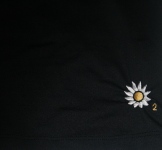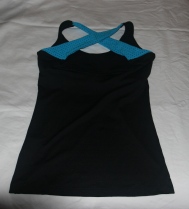Compression Socks
A few years ago when I was watching the New York City Marathon on television, I was quite intrigued by Shalane Flanagan’s choice of socks. What in the world was she doing wearing those compression socks? Since then, I have seen more and more athletes wearing these socks, and even my husband wears them for his long runs. Recently my doctor recommended that I start wearing them to help with my lower left leg. So now I’m curious…
My question, what is so great about compression socks and why should I be using them?
Photo Source: Zimbio
Compression socks were originally developed for people who had circulatory problems or forced inactivity. Since then, athletes from many different sports have started using them as a way help performance and speed recovery. The reasoning: during exercise blood can pool in the legs which leads to fatigue and muscle cramps. With compression socks, the tight elasticity promotes blood flow which sends blood back to the heart. With increased blood flow, there is less fatigue and muscle cramping. There is also more oxygen being delivered throughout the body.
Not all compression socks are alike. They actually come in different sizes (mid-calf, knee, thigh) and in different pressures gradients. Depending on the pressure you are looking for, you can either buy them over the counter or you will need a prescription from your doctor. (I had no idea doctors wrote prescriptions for socks!) The over the counter socks come range in pressure from 10 mmHg – 15 mmHg to 15 mmHg – 20 mmHg. And if you are looking for a little more pressure, your doctor can prescribe socks up to 50 mmHg. Compression socks are tighter around the ankle and foot and then loosen up along the upper part of the leg. In addition to helping promote blood flow through the body, some of the other benefits are increased oxygen delivery to the muscles, accelerated lactic acid removal, stabilization of the lower leg, minimized muscle fatigue and enhanced balance.
At first, I was quite skeptical about these socks. However, if so many elites are using them, they have to be worth something, right? In addition, the science supports the theory of increased blood flow and less muscle fatigue, which is definitely pushing me in the direction of getting a pair. Compression socks are sold basically where you can get anything running related and the prices can range from $30 – $70, depending on the brand. I have never worn any so I do not have any experience or reviews to share, however, Runner’s World has a nice article about the different types of socks and what they are good for. Maybe my husband will let me borrow his so I can experiment with this increased blood flow.
Happy Trails, Happy Running, and HAPPY FRIDAY!
Tracie












